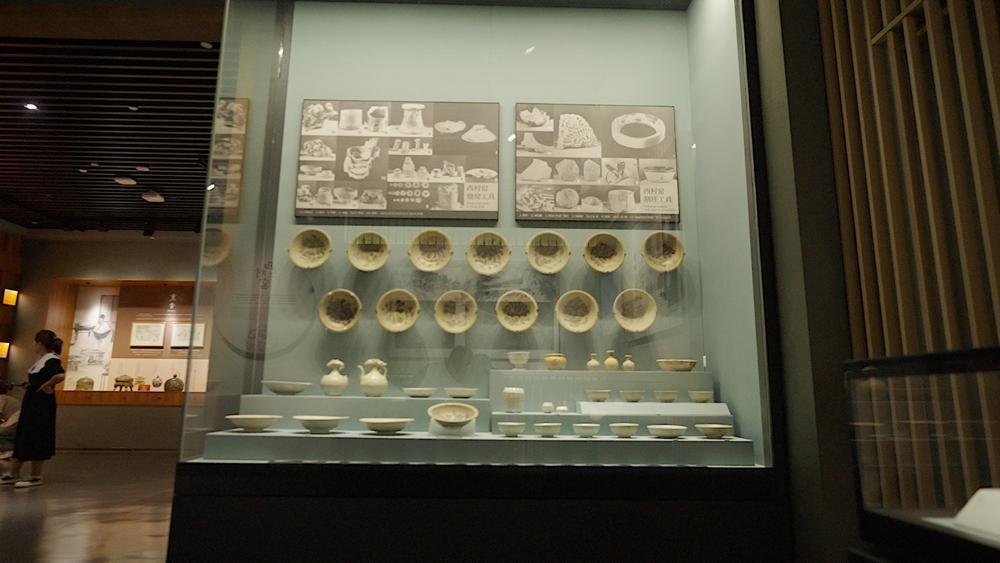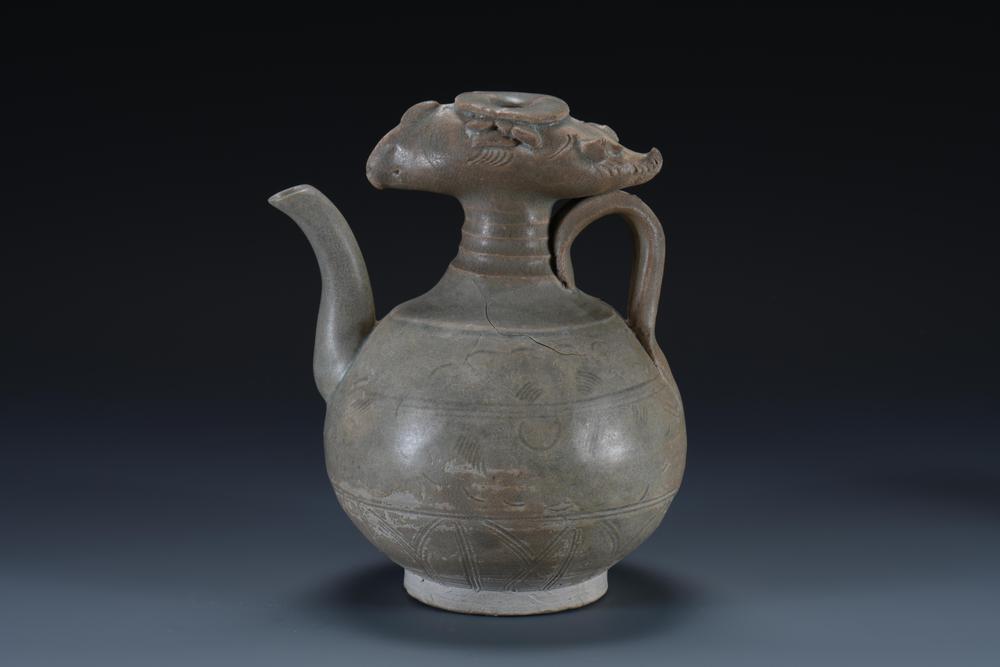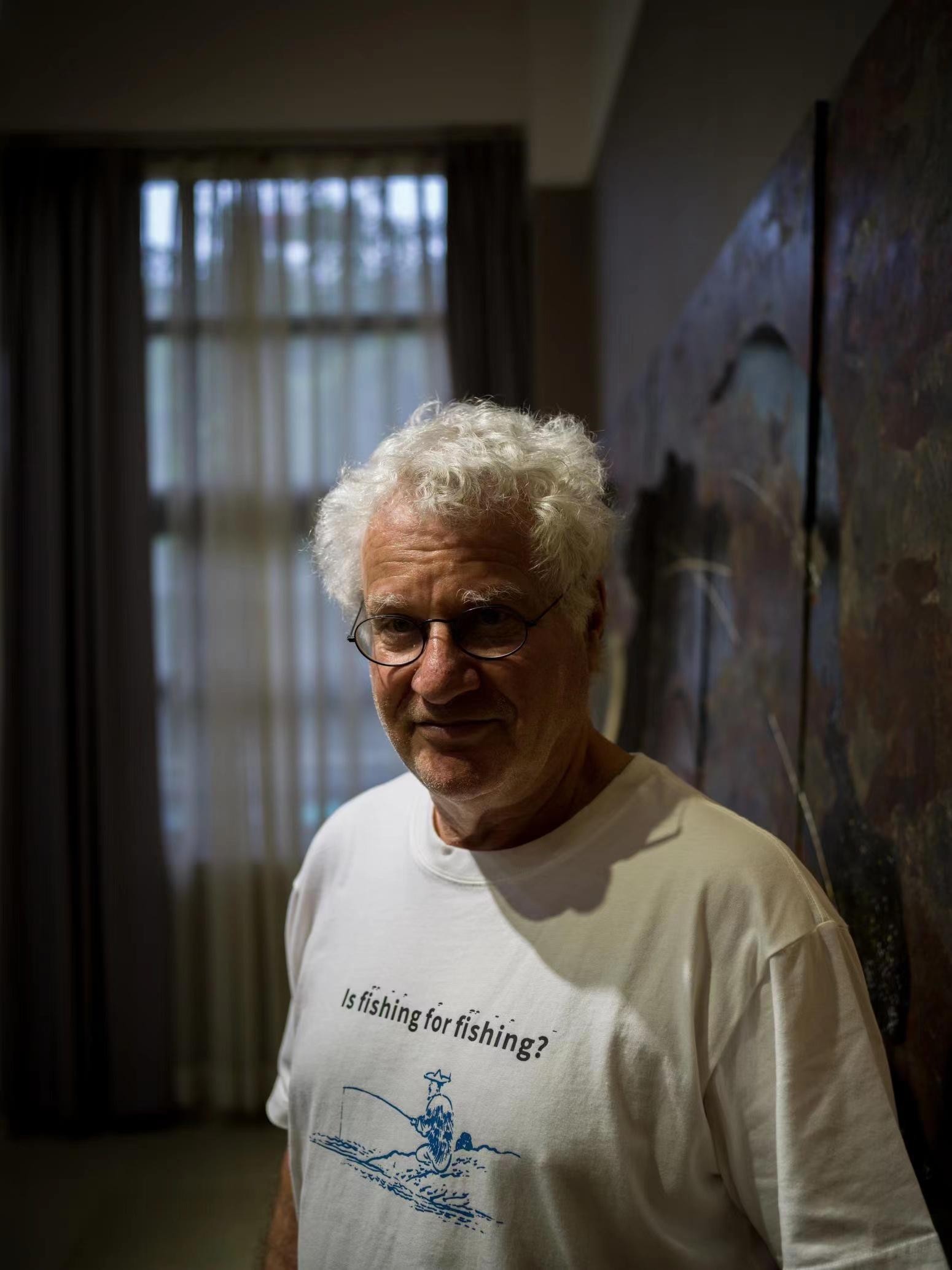
During the Northern Song period (960-1127), Guangzhou's foreign trade reached its peak, and ceramics were among the major foreign trade commodities. Ceramics from famous kilns all over China gathered at Guangzhou port and were then distributed worldwide through the Maritime Silk Road, laying the foundation for Guangzhou's reputation as the "Millennial Commercial Capital".


The flourishing ceramic trade not only boosted the ancient city's economy but also led to the expansion of local kilns. Guangzhou's Xicun kiln ware was born out of this trade and became one of China's renowned kilns for exporting ceramics during the Song Dynasty (960–1279). However, despite being one of the "Four Famous Kilns of Guangdong", complete pieces of Xicun kilns are rare to find within the country.
Thus, in the Guangzhou Maritime Museum, a piece of Xicun kiln ware named "bluish-white phoenix-head ewer" from the Northern Song Dynasty is treasured as a precious artifact. Its unique shape and exquisite decorations have made this phoenix-headed pot the museum's star attraction, captivating visitors from all around the world.
Recently, Jacques Kaufmann, a French ceramic artist, former president of the International Academy of Ceramics (IAC) under UNESCO, and former director of the ceramic department at the School of Applied Arts in Vevey, Switzerland, granted an exclusive interview to Yangcheng Evening News to share his perspective on this rarely seen masterpiece from the Xicun Kiln.

"I genuinely love Song ceramics," Kaufmann expressed, praising the ceramics represented by the Xicun Kiln. "Some people may prefer ceramics from the Ming and Qing dynasties, which are technically perfect, but I find them too focused on technique, lacking an emotional connection."
In Kaufmann's view, the inheritance of history goes beyond technical knowledge; it also encompasses the creative process related to technology and knowledge and the human experiences behind it. Therefore, rather than merely focusing on the ceramics themselves, he is more interested in the cultural energy that inspires craftsmen and artists to create.

【视频】这件“不完美”宋瓷却最打动人心
北宋时期,广州海外贸易日臻鼎盛,陶瓷是最大宗的外贸商品之一。来自全国各地的名窑瓷器在广州港汇聚,又经海上丝路行销世界各地,为广州“千年商都”的城市名片埋下伏笔。
陶瓷贸易不仅繁荣了古代广州的城市经济,也刺激了本地窑业规模的扩大。广州西村窑便因贸易而生,成为我国宋代著名的外销瓷窑。然而,被称为“广东四大名窑”之首的西村窑,其完整器物在国内却少有留存。
因此,在广州海事博物馆里,一件名为西村窑青白釉凤首壶的北宋瓷器被奉为馆藏珍品。它造型别致、装饰精美,千百年时光的流转,令这件凤首壶成为如今博物馆里的“流量担当”。
不久前,法国陶艺家、联合国教科文组织国际陶艺学会(IAC)前任主席、瑞士沃维应用艺术学院陶艺系前任主任雅克·考夫曼(Jacques Kaufmann)接受羊城晚报记者专访,从海外艺术家视角解读了这件难得一见的西村窑精品。
“我是发自内心地喜爱宋瓷。”以西村窑瓷器为代表的宋代瓷器深受雅克·考夫曼的青睐,他说:“从个人情感和审美品位而言,有的人喜欢宋瓷,有的人喜欢明清时期的瓷器。对我而言,明清的瓷器虽然完美,但是过于讲究技巧,这让我无法对它产生更多情感上的共鸣。”
在雅克·考夫曼的概念中,历史的传承不只是技术和知识,还包含了创造技术和知识以及人的经历。因此,相较于关注陶瓷器本身,他更感兴趣的是激发工匠、艺术家创作背后的文化能量。
出品人 | 杜传贵 林海利
策划 | 孙爱群 陈桥生
监制 | 邓琼 蒋铮 吴小攀
统筹 | 朱绍杰 易芝娜
执行 | 文艺 周欣怡
文案 | 文艺 朱绍杰
翻译 | 刘佳慧
鸣谢 | 广州海事博物馆 广州美术学院工艺美术学院
-
Video丨Experience the taste of Chengdu at Kuanzhai Alley
2023-07-31 17:24:12 -
August to welcome two 'Supermoon'
2023-07-30 22:01:25 -
Youth from Guangdong, Hong Kong, and Macao embrace an enchanting night at the South China Botanical Garden
2023-07-30 19:54:04 -
9th birthday party for the world's only panda triplets
2023-07-30 19:53:42






